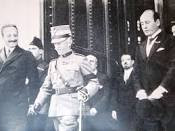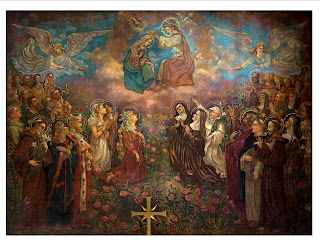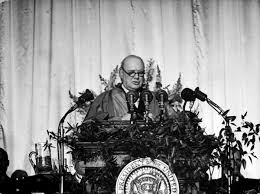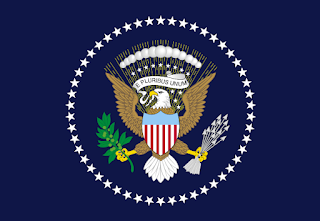Fewer political insults have been thrown around with such widespread abandon in recent years as fascist. Just as right-wingers uninhibitedly label those they oppose as socialist or communist, those on the left like to use the epithet fascist with dismaying frequency. One important difference is that socialist and communist have reasonably recognizable meanings, however much many right-wingers are either ignorant of those meanings or maliciously misuse those words, characterizing as communist more or less anyone or anything they happen not to like. In contrast, fascist is a word with much more historical ambiguity about it. It has been used to describe regimes as varied as Fascist Italy, Nazi Germany, Falangist Spain, Peronist Argentina, Horthy’s – and now Orban’s – Hungary, and even Putin’s Russia. Such wide-ranging application across such historically different regimes really does encourage inconsistent usage and, worse, usage simply as a negative-sounding, content-less term of opprobrium.
In the narrowest sense, of course, fascist applies primarily to the unique 20th-century political phenomenon that invented the term and applied it to itself – the distinctive political movement created and led by Benito Mussolini in interwar Italy. Mussolini himself didn’t march in the famous « March on Rome » (which wasn’t much of a march in any case). In fact, he came to power relatively peacefully (and completely legally), having been appointed prime minister by the king in what might have initially appeared to many contemporaries as yet one more governmental shuffle. Be that as it may, today is the 100th anniversary of what the Fascist movement immortalized as its « March on Rome, » the beginning of Italy’s almost 21-year era fascista – a good day to reflect again on varieties of fascism, then and now.
There were many factors which facilitated the Fascist movement’s rise in Italy in the aftermath of the Great War, but one which must never be underestimated was simply the overall failure of 1861-1922 Italian liberal constitutionalism,* its failure to deliver for most citizens. Then as now, liberal constitutional government’s inability or failure to deliver benefits for its citizens tends to produce a populist disillusionment with traditional liberal political parties and the political process. Italy’s King was not alone in appreciating Mussolini as an alternative to what he was reported to have called « the low game of the parties. » Then as now, never underestimate the political power of grievance to upend everything else!
Likewise, after Mussolini had accomplished what no traditional liberal government had been able to accomplish and had reconciled Church and State in a way which seemed to satisfy both, Pope Pius XI joined the chorus and called him the man « sent by Providence. » Then as now, it is helpful to have religion on one’s side. Then as now, one of liberalism’s most famous failures, as Sheldon Wolin wisely once observed, was its having discarded in religion “a potentially democratic element while deepening the rift between liberalism and democracy, a rift with political consequences” [Politics and Vision: Continuity and Innovation in Western Political Thought (expanded edition, Princeton University Press, 2004), p. 542.] We continue to experience the consequences of this failure in our contemporary « culture war. »
The immediate aftermath of the First World War was, by any measure, a critical time throughout Europe. That obviously included Italy, the weakest of the « Great Powers, » then still a fragile, barely unified kingdom. Italian communist theoretician Antonio Gramsci had famously followed Marx in considering the war « the catastrophe of the capitalist world. » In retrospect, we can recognize how Europe’s post-war was also, in effect, the catastrophe of capitalism’s classical accomplice, liberal constitutionalism. At the same time, although Mussolini himself was an ex-socialist of sorts, the movement, as it developed, evolved in an anti-socialist direction, a search instead for an illiberal, reformed version of capitalism, less burdened by democratic and constitutional constraints, what one expert historian has called a tempered version of the inherited liberal world – « slimmer, more efficient, less yielding and clement, more modern. » [R.J.B. Bosworth, Mussolini’s Italy: Life under the Fascist Dictatorship, 1915-1945 (NY: Penguin, 2006), pp. 152-153.] An analogous mentality may be discerned in contemporary variations of « conservative nationalism » or « nationalist conservatism, » with its populist appeal to the left-out and its elitist cult of strongman-induced unity. (Fittingly, the word fascism is derived from the Roman fasces – the tightly bundled sticks and axe which Roman lictors carried in front of the consuls, signifying unity through forceful authority.)
Italian fascism faced a constant push-and-pull relationship with the pre-existing order. Italy remained a traditional monarchy with a state Church, institutions which constantly counterbalanced fascist aspirations to totalitarian control, in spite of which (or perhaps because of which) Mussolini, more than any other dictator then or since, liked to refer to his system as totalitarian. Like fascist Italy, the playbook for contemporary authoritarian movements which share at least some of the features and aspirations of classical fascism – e.g., Orban’s Hungary – have to reckon with whatever traditional elements still have to be accommodated in some way. (Even Putin, however much he may aspire to rule as a Tsar, cloaks his rule in the symbolic structures of liberal democracy – e.g. the recent sham referenda in occupied Ukraine. And President Trump, for all his authoritarian aspirations, was frequently frustrated by traditional institutions – the military, the judiciary, the civil service – nowadays collectively called constitutional « guardrails ») Of course, then as now, authoritarian strongmen and would-be strongmen suffer frequently from increasing detachment from their societies’ realities and residual institutional and cultural complexities. The Ciano Diaries are a good illustration of this in the case of Italian fascism, highlighting how Mussolini minimized the long-term potential of both Throne and Altar as effective challenges to his totalitarian aspirations.
Just as one cannot speak of Italian fascism without mentioning Mussolini, it seems characteristic of other fascisms and quasi-fascisms that they reflect the specific imprint of their particular national strongmen. The longest-lasting fascist strongman, Spain’s Francisco Franco, for example, acquired power through a bloody civil war which scarred Spain for decades (and scars it still). Unsurprisingly, therefore, although organized street violence and the threat of violence were integral to Mussolini’s movement, Franco’s rule was ultimately much more violent and repressive than Mussolini’s. Quite unlike the trauma of the Spanish Civil War, Italy had not been « wrenched out of joint, » the result being Italian fascism’s relative « softness, compromise, confusion, » and « lack of rigor » [Bosworth, p. 109.].
On the other hand, Franco proved more practical about the perils of an alliance with Nazi Germany and had the strategic sense to stay out of World War II, thus remaining in power for decades and dying peacefully in his bed. Mussolini and Franco’s Hungarian contemporary Miklós Horthy – an admiral in a country without a navy, the royal regent of a kingdom without a king – could perhaps not have so easily escaped an alliance with neighboring Nazi Germany. Hungary’s contemporary strongman, Victor Orban, on the other hand, seems more like Franco in this regard, rather risk-averse when it comes to international conflict.
So, when one worries now about the prospects for an American fascism, it is very much the personal characteristics of any relevant would-be strongman that attract attention, against the omnipresent background of the real and perceived failures of the existing system. Here, the history of the uniquely chaotic Trump presidency complicates matters a lot, since, on the one hand, he clearly seemed to fit an authoritarian model, but, on the other hand, he had little by way of ideology or political philosophy apart from that. One could characterize Trump more as a symptom of what has been happening on the U.S. political Right, but nonetheless an historically decisive symptom of something very serious, regardless of whether or not it is usefully characterized as Fascism. There is a movement now, for which there seems to be little prospect of turning back, which clearly does aspire to the effective control of state power with more of an agenda than mere personal score-settling, even if this has meant moving away from the American Right’s traditional aversion to « big government. » And this is happening, as Jonathan Chait has written, not so much because they have « changed their policy goals, » but because they have « lost faith in the potential for normal politics. » [« How To make a Semi-Fascist Party, » New York Magazine, October 12, 2022].
In that one particular respect at least, in this loss of faith in normal politics, the United States in 2022 does really resemble Italy in 1922.
*I prefer the term « liberal constitutionalism » to « liberal democracy, » in recognition of the newly unified Italian kingdom’s democratic deficits. Thus, for example, universal male suffrage (for men 30 and older) was only adopted in 1912 and first implemented in the elections of 1913. Following the Great War, in 1918 the electorate was expanded to all male citizens 21 and older or who had served in the army. (Women’s suffrage was introduced in 1945 and implemented for the first time in the 1946 referendum.)
Photo: Italy’s King Victor Emmanuel III with his Prime Minister, Benito Mussolini, The National WWII Museum, New Orleans.




